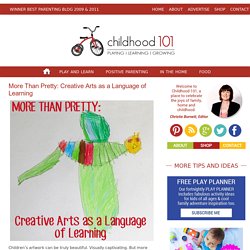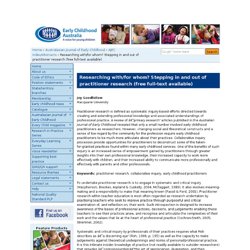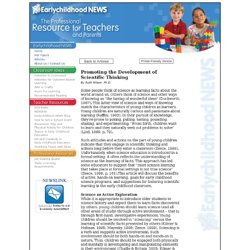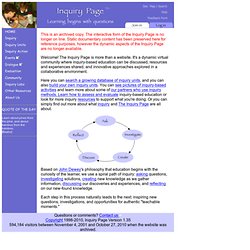

More Than Pretty: Creative Arts as a Language of Learning. Children’s artwork can be truly beautiful.

Visually captivating. But more than being pretty, or even interesting, it can tell a story. Look intently as they create and you will see the child’s story unfold. Quite often he story of a theme or subject, and always the story of the artiste – a window into their knowledge, thoughts and ideas, feelings and emotions. I was recently asked what led to my passion for process art for children and my response included; ”For six years I was the start-up Director of an Early Learning Centre for 2-5 year olds and it was during this time that I began researching, and ultimately adopting, an Emergent Curriculum approach to early education.
Early one morning Immy (5 1/2 years), AJ (15 months) and I looked out the playroom window to discover a brightly coloured parrot eating an apple on a fruit tree in our backyard. She had already completed the first page of her book, “Parrots eat apples,” (shown above) and was working on the cover (see below). Www.tcpress.com/pdfs/ProjectPlanningJournal.pdf. The Project Approach to Learning. ResearchBriefs.pdf. Www.naturalcuriosity.ca/pdf/NaturalCuriosityManual.pdf. Abcdoes.typepad.com/files/lighting-the-fire-community-play-things.pdf. Inquiry-based Learning: Explanation. What is inquiry-based learning?

An old adage states: "Tell me and I forget, show me and I remember, involve me and I understand. " The last part of this statement is the essence of inquiry-based learning, says our workshop author Joe Exline 1. Inquiry implies involvement that leads to understanding. Furthermore, involvement in learning implies possessing skills and attitudes that permit you to seek resolutions to questions and issues while you construct new knowledge. "Inquiry" is defined as "a seeking for truth, information, or knowledge -- seeking information by questioning. " A Context for Inquiry Unfortunately, our traditional educational system has worked in a way that discourages the natural process of inquiry. Trace.tennessee.edu/cgi/viewcontent.cgi?article=1016&context=utk_graddiss&sei-redir=1&referer=http%3A%2F%2Fwww.google.com.au%2Furl%3Fsa%3Dt%26rct%3Dj%26q%3Dinquiry%2520and%2520reflective%2520teaching%2520early%2520childhood%26source%3Dweb%26cd%3D24%26ved%
Journal.naeyc.org/btj/vp/pdf/Voices-Stremmel.pdf. The Inquiry Approach to Learning - Early Learning. 1. systematic instruction in skills students need to learn2. investigative approach to USE these skills in another context.

The inquiry approach really focuses on the HOW we learn/find out rather then just focusing on content. It is concerned with acquiring the skills of learning. The approach is centred around finding possible solutions to a problem. In other words, investigating a question posed. Often the teacher is the questioner. How do you know this? An adventure with the Inquiry approach in Year 1 Year 1 at Regents Park investigated life cycles by following the progress of chickens hatching in their classroom. This topic evolved from the HSIE/Science focus which was on investigating "Living Things" and lifecycles. The Year 1 teachers began this real world investigations approach by using EKWQ... E is for EXPERIENCE K is for KNOWLEDGE W is for WONDER Q is for QUESTIONS. Researching with/for whom? Stepping in and out of practitioner research (free full-text available)
Joy Goodfellow Macquarie University Practitioner research is defined as systematic inquiry-based efforts directed towards creating and extending professional knowledge and associated understandings of professional practice.

A review of ‘primary research' articles published in the Australian Journal of Early Childhood revealed that only a small number involved early childhood practitioners as researchers. However, changing social and theoretical constructs and a sense of low regard by the community for the profession require early childhood practitioners to be much more articulate about their practices. Collaborative inquiry processes provide opportunities for practitioners to deconstruct some of the taken-for-granted practices found within many early childhood services. Keywords: practitioner research, collaborative inquiry, early childhood practitioners. Reflective Teaching Slides. What Does Inquiry Look Like in Kindergarten? The children were engaged in the inquiry process while observing the properties of water.

As they worked at learning centres the teacher invited interested children to come and discuss what they know about water and its colour. The children made comments which reflected their emerging understanding of the properties of water. These comments then acted as the basis for which to lead the investigation. The children were then prompted to wonder whether the water is the same colour as the white carnation flower. Next the children considered what would happen if colour was added to the water. The children made all kinds of hypotheses including “the flowers will die”, “the water will change”, “the water will change the colours of the flowers”.
Introduction. 1.

Students learn isolated skills and knowledge, starting with the simple building blocks of a particular topic and then building to more complex ideas. While this appeals to common sense (think of the efficiency of a automobile assembly line), the problem with this approach is the removal of any context to the learning, making deep understanding of the content less likely.
Perkins calls this approach elementitis, where learning is structured exclusively around disconnected skills and fragmented pieces of information. Earlychildhood NEWS - Article Reading Center. Some people think of science as learning facts about the world around us.

Others think of science and other ways of knowing as “the having of wonderful ideas” (Duckworth, 1987). This latter view of science and ways of knowing match the characteristics of young children as learners. Young children are naturally curious and passionate about learning (Raffini, 1993). In their pursuit of knowledge, they’re prone to poking, pulling, tasting, pounding, shaking, and experimenting.
“From birth, children want to learn and they naturally seek out problems to solve” (Lind, 1999, p. 79). Such attitudes and actions on the part of young children indicate that they engage in scientific thinking and actions long before they enter a classroom (Zeece, 1999). Science as Active Exploration Therefore, science for young children should involve asking questions, probing for answers, conducting investigations, and collecting data.
Discovery Learning Science Goals *Adapted from Martens, 1999, p. 26. Www.naturalcuriosity.ca/pdf/BranchISection.pdf. Www.earlychildhoodaustralia.org.au/nqsplp/wp-content/uploads/2012/10/NQS_PLP_E-Newsletter_No45. Institute for Inquiry: A Description of Inquiry. The Inquiry Page. Based on John Dewey's philosophy that education begins with the curiosity of the learner, we use a spiral path of inquiry: asking questions, investigating solutions, creating new knowledge as we gather information, discussing our discoveries and experiences, and reflecting on our new-found knowledge.

Each step in this process naturally leads to the next: inspiring new questions, investigations, and opportunities for authentic "teachable moments. "